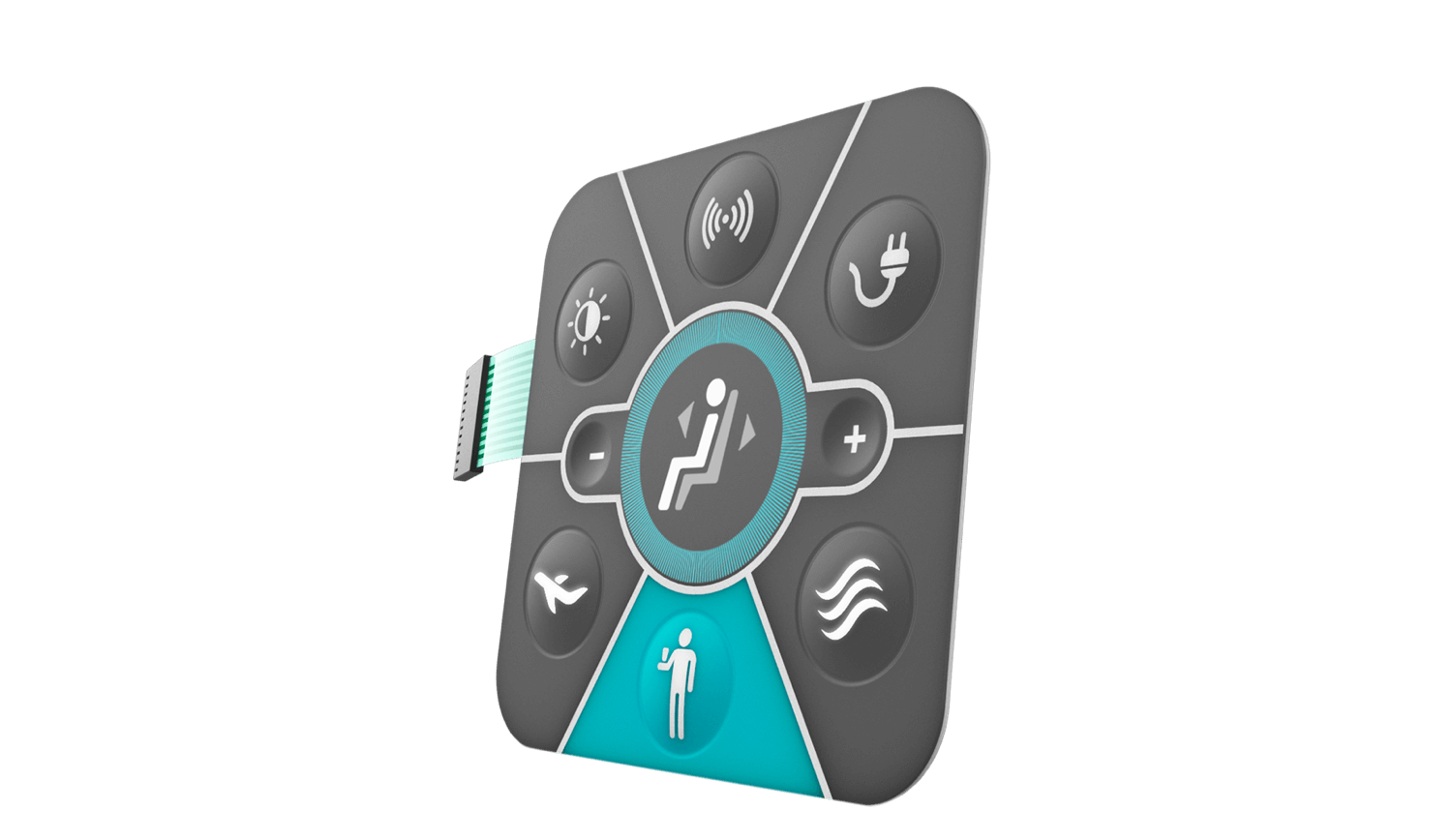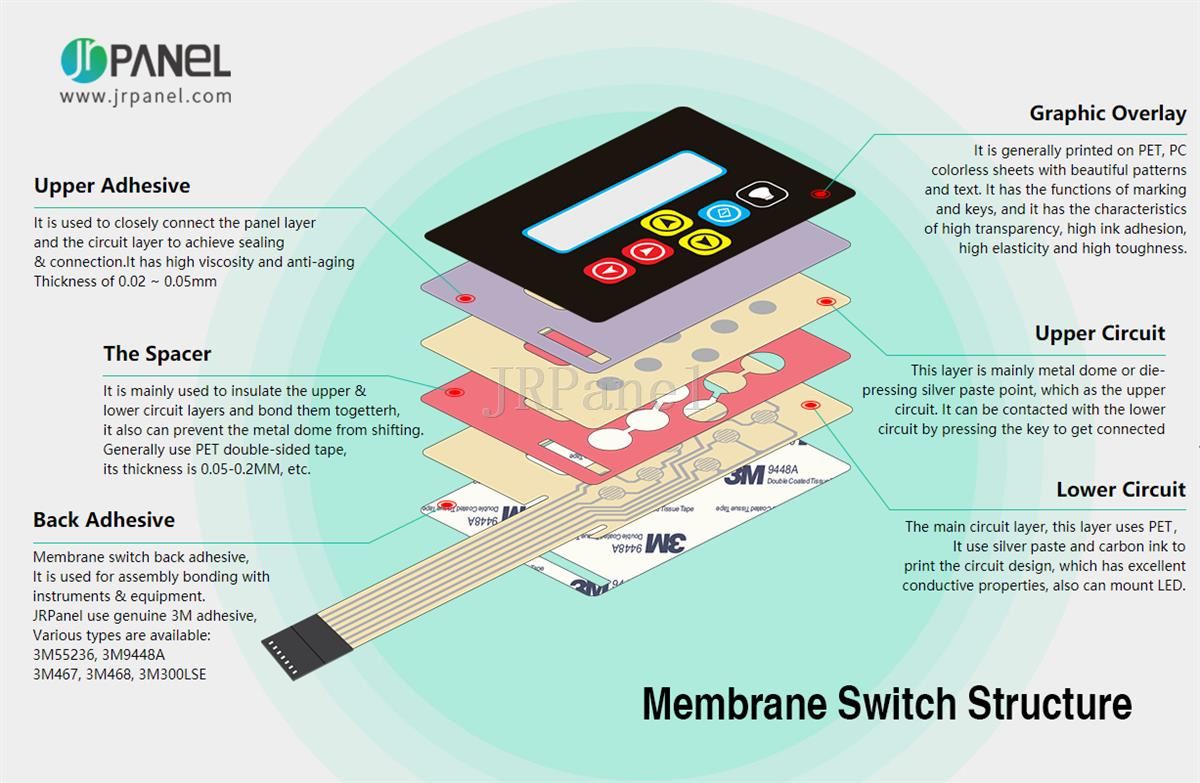Understanding the Capability of Membrane Layer Switches Over for Interface Tools
The performance of membrane switches over represents a considerable innovation in interface style, incorporating performance with visual versatility. These buttons operate with a multi-layered structure that converts user communications into electric signals, allowing for both compact designs and resilience versus ecological variables. As markets progressively prioritize customer experience, comprehending the subtleties of membrane button modern technology becomes essential. What effects do these developments hold for future applications, and exactly how might they redefine user interactions across numerous tools?
What Are Membrane Layer Switches?
Membrane buttons are cutting-edge user interface devices that facilitate customer communication with electronic equipment. These versatile elements contain numerous layers, consisting of a visuals overlay, spacer, and a printed circuit layer. The layout permits a smooth integration into numerous electronic tools, improving both the aesthetic and useful elements of customer interfaces.
Membrane layer buttons are typically utilized in a large range of applications, from home appliances to industrial equipment and clinical tools. Their building usually features a thin profile, making them an excellent selection for portable layouts. The tactile responses given by these switches can be crafted to meet certain user preferences, ensuring efficient interaction in between the user and the device.
Sturdiness is another considerable advantage of membrane buttons, as they are resistant to dust, wetness, and chemicals, which boosts their life expectancy in demanding settings. In addition, these buttons can be tailored in regards to form, size, and graphic layout, enabling for branding and user-specific features. On the whole, membrane layer switches represent a practical option for improving individual experience in digital tools, combining performance with visual charm in an effective manner.
Just How Membrane Changes Work
Operating on a simple concept, membrane layer switches over make use of a layered building and construction to register customer input efficiently. Each button contains several layers, consisting of a printed circuit layer, a spacer layer, and a top visuals layer, which are designed to collaborate effortlessly. When a customer presses the top layer, it presses the spacer layer, bringing the conductive aspects of the circuit layer into contact with each various other.
This contact produces a shut circuit, signaling the tool to perform a particular function. The layout enables numerous configurations, consisting of tactile responses, which can improve the customer experience by providing a physical sensation upon activation. The materials made use of in membrane layer switches commonly include flexible substratums, such as polyester or polycarbonate, which make certain longevity and durability versus deterioration.

Key Advantages of Membrane Layer Buttons

An additional significant benefit is their density. Membrane layer buttons are slim and lightweight, which enables manufacturers to save room in their gadgets without compromising performance. This feature is specifically advantageous in applications where weight and quantity are important considerations.
In addition, membrane layer buttons are resistant to dust, wetness, and chemicals, boosting their toughness. This strength prolongs their lifespan and minimizes the requirement for constant substitutes, leading to price savings with time.
Additionally, the responsive comments given by membrane switches can be maximized to enhance individual communication. They can include functions such as raised buttons or audible clicks, boosting usability and user experience.
Applications Across Industries
Interface gadgets making use of membrane buttons are widespread in a large variety of industries, showcasing their versatility and functionality. Membrane Switch. In the clinical industry, membrane layer switches are essential to devices such as analysis equipment and person surveillance systems, where their resilience and simplicity of cleansing are vital for keeping hygiene standards. In the automotive industry, these switches are used in control panel controls and infotainment systems, offering a smooth and modern-day user interface for customers.
Moreover, the customer electronics market benefits from membrane switches in home appliances and portable gadgets, where small style and easy to use interfaces improve user experience. Industrial applications additionally leverage membrane layer changes for control panels in machinery and automation systems, stressing their effectiveness and resistance to rough environments.
In the aerospace and defense sectors, membrane buttons are utilized in cockpit controls and devices, where dependability and performance under severe problems are extremely important. Furthermore, the pc gaming sector progressively incorporates membrane layer switches in controllers and arcade machines, adding to an interesting individual experience. On the whole, the convenience of membrane layer switches over allows their widespread use throughout many markets, highlighting their relevance in modern user interface style.
Future Patterns in Membrane Layer Change Innovation

Additionally, making use of advanced products, such as polycarbonate and polyester movies, is Visit Your URL anticipated to rise, offering enhanced durability and resistance to environmental stress factors. These materials add to the general long life of membrane layer switches, making them suitable for harsher industrial applications.
Furthermore, the incorporation of smart modern technology, including IoT connectivity, will certainly enable membrane buttons to communicate with various other devices and systems, assisting in a much more interactive user experience. This fad aligns with the growing demand for smart gadgets across various sectors, from healthcare to consumer electronics.
Finally, personalization choices are prepared for to increase, allowing suppliers to create bespoke options this website tailored to specific individual demands and preferences. These growths will certainly place membrane layer buttons as important elements in the development of customer interface technology.
Verdict
Finally, membrane layer switches stand for an essential advancement in customer interface technology, providing a reliable and flexible remedy for diverse digital applications. Their split building assists in portable style, while features such as responsive comments improve customer interaction. The resilience against ecological variables additionally solidifies their energy throughout numerous industries. As improvements in material scientific research and touch sensing technologies proceed, the performance and applicability of membrane buttons are expected to increase, enhancing their value in contemporary electronic tools.